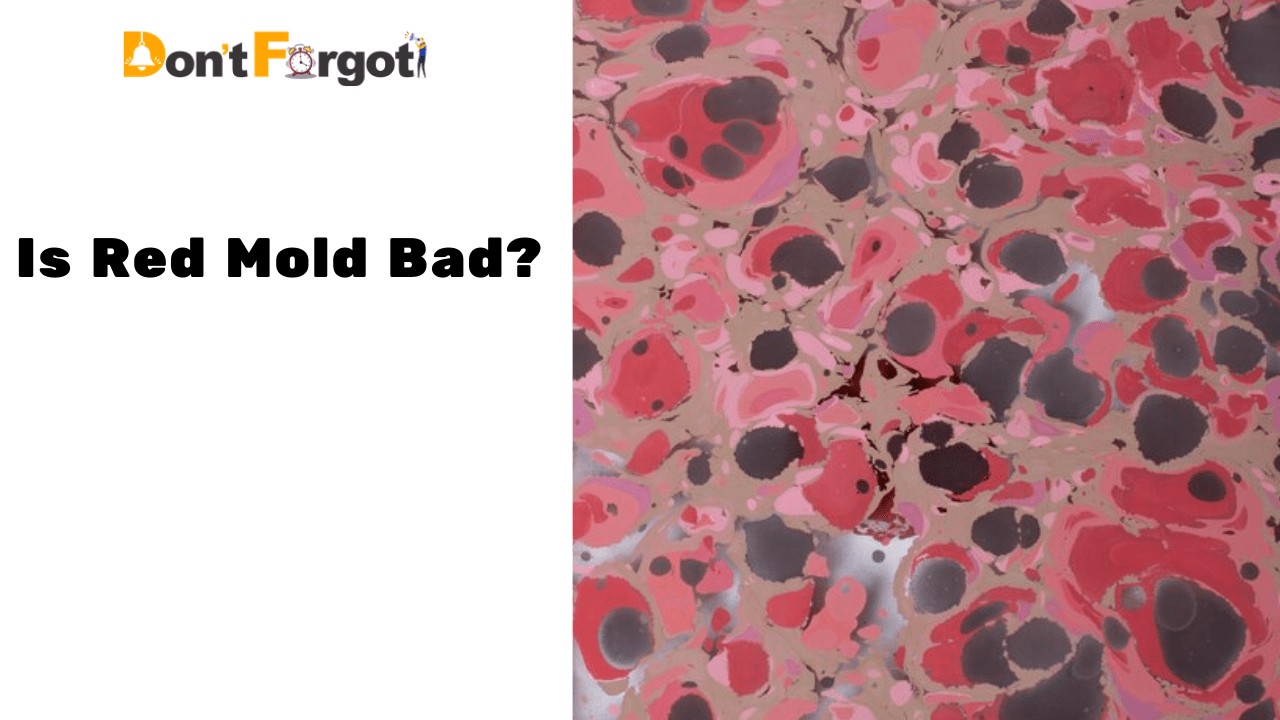Red mold may not be as infamous as black mold, but its impact on health is significant. Often found in damp, humid spaces like bathrooms and basements, this mold can trigger allergies and respiratory issues. Understanding the dangers of red mold, such as its potential to cause illness, is essential.
This guide delves into the health risks of mold, covering whether this mold is dangerous to humans and offering tips on prevention and removal.
What is Red Mold?
Red mold is typically a fungus from the Fusarium or Aureobasidium species. While some molds are beneficial, others can be hazardous, and this mold toxicity is something you might need to be cautious about. Red mold thrives in moist environments and can appear on various surfaces, including walls, tiles, and food. It’s not just unpleasant to look at; it can potentially harm your health.
Is Red Mold Harmful?
Absolutely. While it might not be as notorious as black mold, red mold can pose similar threats. Is red mold harmful? Yes, especially for those with allergies, asthma, or weakened immune systems. Exposure can lead to symptoms like coughing, sneezing, skin irritation, and, in severe cases, even more serious respiratory issues.
The presence of mold in any form usually indicates an underlying moisture problem, and addressing this issue promptly is crucial to avoid further growth.
Dangers of Mold Exposure
The dangers of this mold exposure can vary depending on the individual and the length of exposure. For some, short-term contact might only cause mild irritation. However, prolonged exposure can lead to more serious health concerns. Mold releases spores into the air, which, when inhaled, can trigger an immune response. This is particularly risky for those with pre-existing conditions.
Mold Toxicity: Is It Really That Dangerous?
This mold toxicity refers to the toxic effects of exposure to the mold’s mycotoxins. While not all red molds produce mycotoxins, certain species do, and these toxins can be quite harmful. Mycotoxins are known to cause a range of health issues, from minor symptoms like headaches to more severe effects, including neurological and respiratory issues.
Health Risks of Mold to Humans
One of the most pressing questions is, is this mold dangerous to humans? The answer is yes. Health risks vary from person to person, but anyone can be affected if exposure levels are high enough. Mold spores, which are tiny and airborne, can be easily inhaled, leading to symptoms such as:
- Sneezing and coughing
- Skin rashes or irritation
- Watery or itchy eyes
- Respiratory problems
Can Red Mold Make You Sick?
So, can red mold make you sick? Without a doubt. People with allergies or respiratory issues are at a higher risk, but even healthy individuals can experience symptoms. It’s also important to note that red mold can sometimes grow on food, and consuming contaminated food can lead to gastrointestinal issues. Even touching the mold directly without proper protection can result in skin irritation.
How to Identify and Remove Red Mold Safely?
Identifying this mold isn’t always easy, as it can be mistaken for dirt or rust stains. If you suspect mold, it’s best to have it tested by a professional. Once identified, removal should be handled carefully. Always wear protective gear, such as gloves and a mask, and consider hiring a professional if the affected area is extensive.
FAQs About Red Mold
Can red mold affect my pets?
Yes, this mold can also impact pets, especially if they have prolonged exposure. If ingested, pet symptoms can include respiratory distress, lethargy, and even digestive issues.
How can I prevent mold in my home?
Maintaining low humidity levels is key. Use dehumidifiers, fix leaks promptly, and ensure proper ventilation in moisture-prone areas like bathrooms and kitchens.
Is all red mold toxic?
Not all mold species produce toxins, and it’s challenging to determine without professional testing. To minimize health risks, treat all mold with caution.
Should I call a professional to remove the red mold?
If the mold covers a large area or grows in multiple places, it’s wise to consult a professional. They can safely and effectively remove the mold and help address the underlying moisture problem to prevent regrowth.
Final Thoughts
Red mold’s health effects should not be underestimated. Although not every species is highly toxic, it can still pose significant health risks, especially for vulnerable individuals. The key is identifying and eliminating this mold as soon as it’s detected to minimize potential harm.
While not as well-known as black mold, this mold is still a serious concern due to its potential health risks. By understanding the signs, risks, and removal methods, you can better protect yourself and your loved ones from the dangers of mold exposure. Always be proactive about addressing any signs of mold in your home, and seek professional help if needed.

